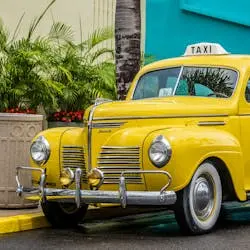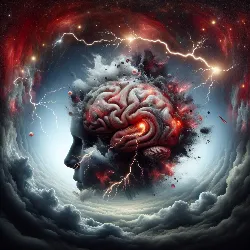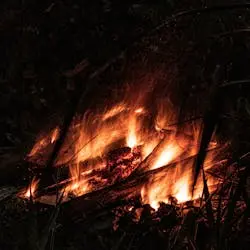
Level 1:
School buses and taxis are yellow. Why? Yellow is an easy color to see. People can see it during the day and night. It is also easy to see in rain, fog, or snow. Yellow is safer because people see it better. This helps to stop accidents.
Level 2:
Have you ever wondered why school buses and taxis are usually yellow? The primary reason is visibility. Yellow, specifically a color known as ‘school bus yellow’, is a color that can be easily seen during the day and night, in sunlight, darkness, rain, fog, or snow. Therefore, it increases safety. The high visibility of yellow helps drivers to avoid hitting these vehicles, reducing the risk of accidents.
Full Story:
It’s hard to miss the iconic yellow vehicles - school buses and taxis. But have you ever pondered why they’re painted bright yellow? This certainly wasn’t a frivolous decision. There’s a method to the madness, and it all boils down to one key aspect - visibility.
Yellow is an incredibly vibrant color that reaches our eyes faster than any other color. This is due to the scientific phenomenon known as the ‘Purkinje Effect.’ During the quiet hours of dawn and dusk, our eyes are drawn more towards bright colors like yellow.
Moreover, not just any yellow, but ‘school bus yellow’ (a certain bright shade officially created and named in 1939), is known for its high visibility during the day and night, under sunlight or street lights, and in varying weather conditions such as rain, fog, or snow.
This high visibility acts as an alert to other drivers from a distance, giving them ample warning to slow down or steer clear from the vehicle, thereby reducing the chances of a run-in.
Another aspect is psychological. Yellow is associated with attention and caution worldwide, due largely to its use in traffic and warning signs. This seemly innocuous color choice can, in fact, be a lifesaver.
Therefore, while the bright yellow of school buses and taxis may seem like a quirk of design, it is, in fact, a calculated decision grounded in safety considerations. It’s a great example of how sometimes, the most common-sense safety measures are staring us right in the face — if we’re paying attention.
So, the next time you spot a canary-yellow vehicle zipping past, you’ll know there’s more than meets the eye. After all, as they say, not all that glitters is gold, but with safety, school buses and taxis are definitely golden!
Questions:
Question: Why are school buses and taxis painted yellow?
Answer: School buses and taxis are usually painted yellow because of the color’s high visibility during various times of day and night and under different weather conditions, which enhances safety on the road.
Question: How does the color yellow contribute to road safety?
Answer: The color yellow is highly visible to our eyes, acting as an alert to other drivers from a distance. This gives them enough time to slow down or steer clear from the vehicle, thereby reducing the chances of accidents.
Question: What is ‘school bus yellow’?
Answer: ‘School bus yellow’ is a bright shade of yellow officially created and named in 1939. It is known for its high visibility under various lighting and weather conditions.
Question: Is there a psychological significance to the color yellow in road safety?
Answer: Yes. Psychologically, the color yellow is associated with attention and caution worldwide, mainly due to its use in traffic and warning signs. This seemingly innocuous color choice can in fact be a life-saver.
Fill in the Blanks:
method to the madness, reducing the chances of a run-in, quirk of design, staring us right in the face, not all that glitters is gold
There’s a ______, and it all boils down to one key aspect - visibility.
The high visibility acts as an alert to other drivers from a distance, giving them ample warning to slow down or steer clear from the vehicle, thereby ________.
Therefore, while the bright yellow of school buses and taxis may seem like a __________, it is, in fact, a calculated decision grounded in safety considerations.
It’s a great example of how sometimes, the most common-sense safety measures are ______ — if we’re paying attention.
As they say, _______, but with safety, school buses and taxis are definitely golden!
Difficult Words:
Method to the madness - (phrase) a purpose or plan behind someone’s inexplicable behavior.
Reducing the chances of a run-in - (phrase) lowering the risk of an unexpected, often unpleasant encounter.
Quirk of design - (phrase) a unique or peculiar feature in a design.
Staring us right in the face - (phrase) very obvious or noticeable, but often overlooked.
Not all that glitters is gold - (proverb) appearances can be deceptive; because something looks valuable, it does not mean it actually is valuable.
Final Notes:
Interestingly, the decision to make all school buses across the US a particular shade of yellow was taken in a conference in 1939. They chose yellow because it grabs attention and is noticed faster than any other color in peripheral vision. The fact that black lettering on a yellow backdrop is easier to see in the semi-darkness of early morning and late afternoon also played a part in the decision. This goes to show that what often seems like a simple aesthetic choice, can actually be a deep-rooted strategic decision with safety in mind.




